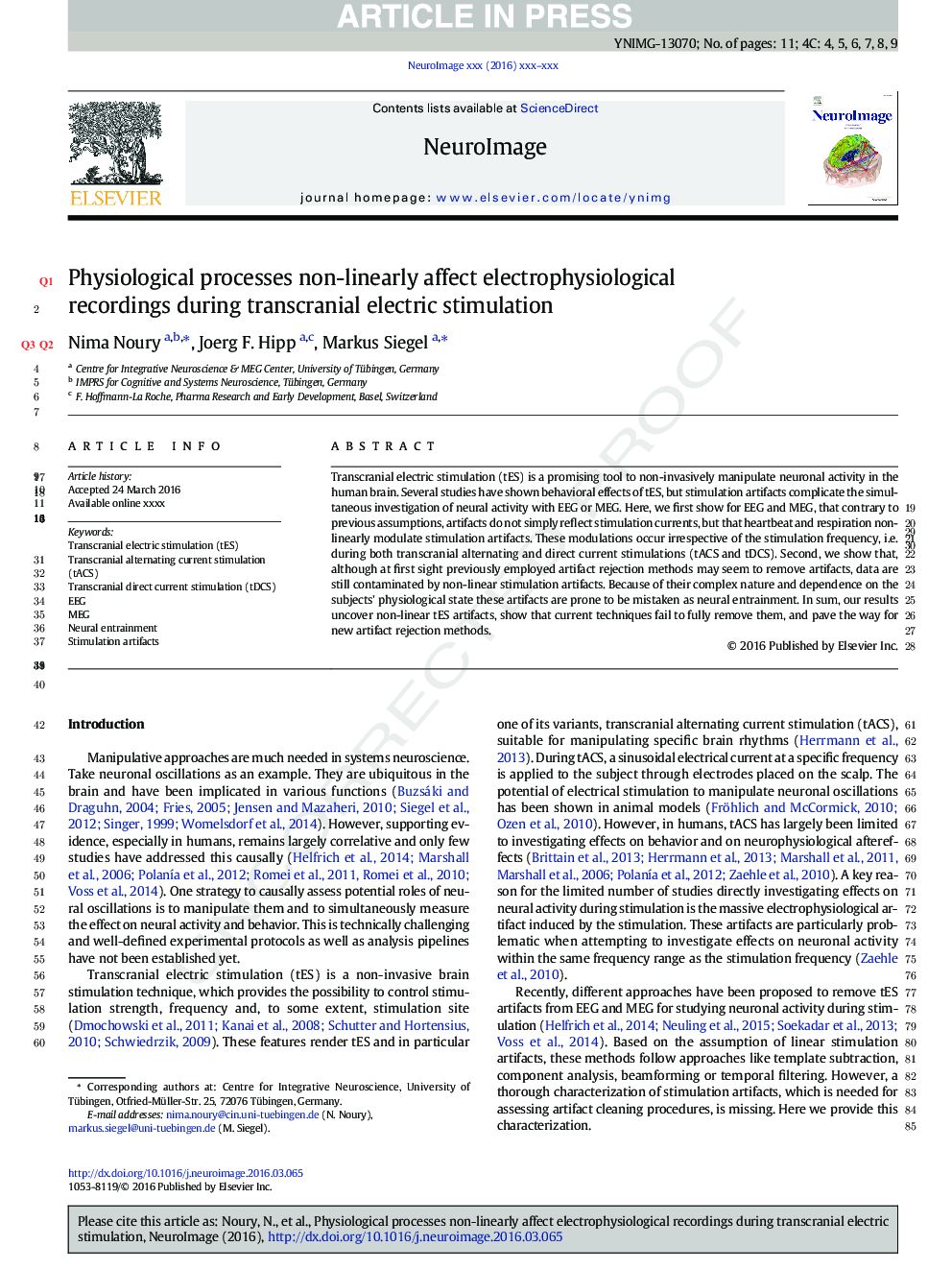| Article ID | Journal | Published Year | Pages | File Type |
|---|---|---|---|---|
| 6023189 | NeuroImage | 2016 | 11 Pages |
Abstract
Transcranial electric stimulation (tES) is a promising tool to non-invasively manipulate neuronal activity in the human brain. Several studies have shown behavioral effects of tES, but stimulation artifacts complicate the simultaneous investigation of neural activity with EEG or MEG. Here, we first show for EEG and MEG, that contrary to previous assumptions, artifacts do not simply reflect stimulation currents, but that heartbeat and respiration non-linearly modulate stimulation artifacts. These modulations occur irrespective of the stimulation frequency, i.e. during both transcranial alternating and direct current stimulations (tACS and tDCS). Second, we show that, although at first sight previously employed artifact rejection methods may seem to remove artifacts, data are still contaminated by non-linear stimulation artifacts. Because of their complex nature and dependence on the subjects' physiological state, these artifacts are prone to be mistaken as neural entrainment. In sum, our results uncover non-linear tES artifacts, show that current techniques fail to fully remove them, and pave the way for new artifact rejection methods.
Keywords
Related Topics
Life Sciences
Neuroscience
Cognitive Neuroscience
Authors
Nima Noury, Joerg F. Hipp, Markus Siegel,
